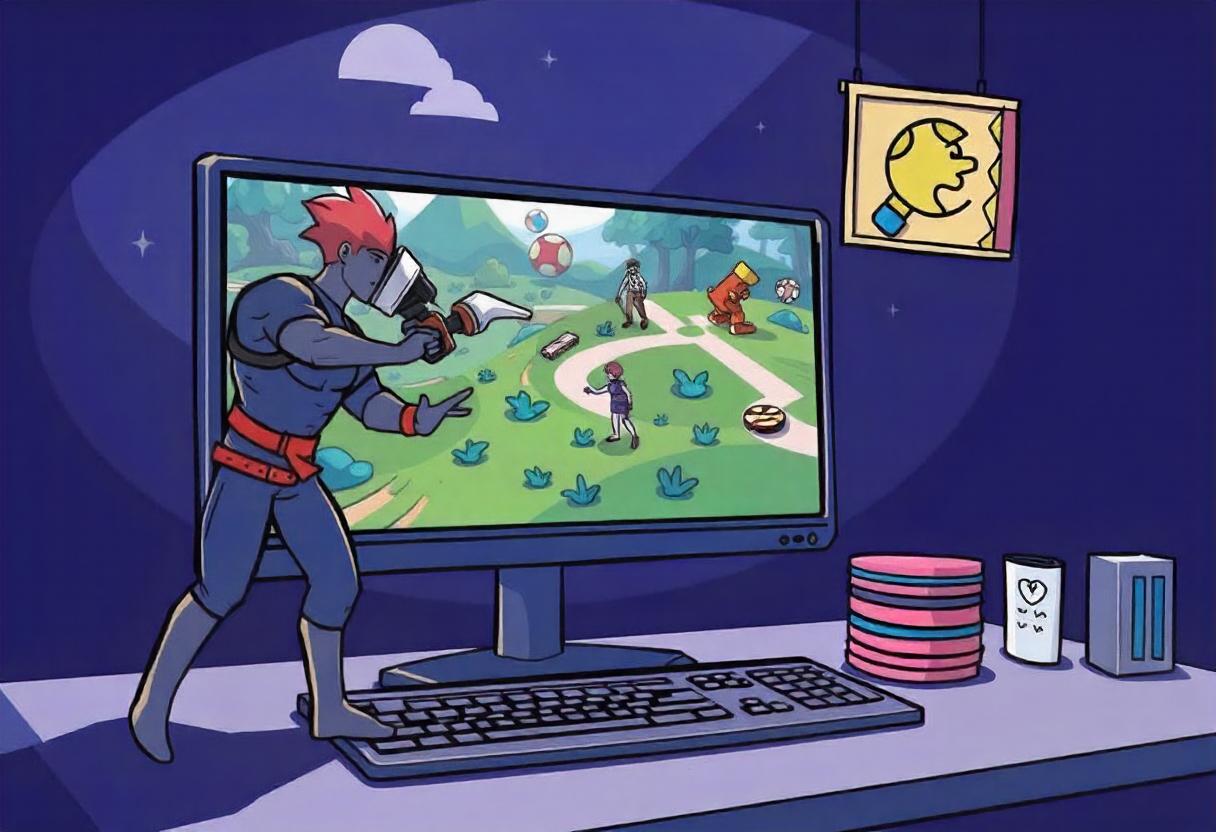Crafting a video game that captures the attention of players and stands out in the crowded market involves more than just innovative gameplay. Strategic design choices can be a powerful tool in amplifying your marketing efforts and driving the game’s success. Every decision, from character design to the narrative structure, plays a pivotal role in shaping how your game is perceived and how effectively it can engage players.
Design elements aren’t just aesthetic choices; they are integral to building a game’s identity and can directly influence marketing outcomes. A well-designed character can become an icon that draws in potential players, while a compelling storyline can serve as the backbone for your promotional campaigns, providing rich content that resonates with your audience. The visual style of your game sets the tone for all your marketing materials, creating a cohesive and recognizable brand that players can connect with.
Stick around as this blog dives into how these thoughtful design choices serve as the foundation for a successful marketing strategy. By understanding the interplay between game design and marketing, developers can create games that not only attract players but also build a loyal community, ensuring long-term success. We will also explore practical tips for integrating design with marketing efforts and examine the emerging trends that are set to shape the future of the gaming industry.
Whether you’re a seasoned developer or new to the industry, recognizing the impact of design on marketing can be the key to elevating your game above the competition.

The Synergy Between Game Design and Marketing
Game design and marketing are often seen as separate entities, but they are deeply interconnected. Every design decision—from character aesthetics to gameplay mechanics—can be leveraged to strengthen your marketing strategy. By aligning your game design with your marketing goals, you create a cohesive product that not only plays well but also markets itself effectively.
The Role of Game Design in Marketing
Game design is not just about creating a playable product; it's about crafting an experience that connects with players on multiple levels. This connection is what drives successful marketing, as it turns players into advocates who share your game with others. Here’s how game design directly influences marketing:
- First Impressions Matter: The initial visuals and gameplay experience are often the first things potential players encounter, whether through trailers, social media reels, or store listings. A distinctive art style or compelling character design can create a strong first impression, making your game more memorable and attractive.
- Building a Cohesive Brand: Consistent design elements across your game and marketing materials help build a strong brand identity. This consistency ensures that your game is easily recognizable and leaves a lasting impression.
- Enhancing Player Engagement: A well-designed game naturally encourages players to spend more time in the game world, increasing the likelihood of word-of-mouth promotion. Positive experiences lead to positive reviews, which are critical for marketing success.
Key Game Design Elements That Influence Marketing Success
- Character Design and World-Building
Characters and environments are the heart of your game’s identity. They not only drive the narrative but also serve as the visual symbols of your brand. Unique characters can become the face of your marketing campaigns, while immersive worlds provide endless content opportunities for trailers, social media, and community engagement.
- User Experience (UX) and Gameplay Mechanics
A well-designed user experience can be a powerful marketing tool. Games that are intuitive to play and provide a satisfying challenge are more likely to be shared by players, leading to organic growth. Positive user experiences translate into positive reviews, an element crucial for marketing success.
- Narrative and Storytelling
A compelling narrative is not just for the players’ enjoyment; it’s also a rich resource for your marketing content. Stories can be used to create engaging trailers, social media posts, and even spin-off content like webcomics or animated shorts.
- Art Style and Visual Identity
A distinctive visual style helps your game stand out in a crowded market. This visual identity should be reflected across all your marketing materials to create a cohesive brand experience.
Tips for Integrating Design and Marketing
- Collaborate Early: Involve your marketing team early in the design process. This collaboration ensures that your game’s design aligns with your marketing strategy, allowing for the creation of cohesive and compelling campaigns.
- Use Design as a Marketing Tool: Leverage unique design elements—such as characters, environments, and art styles—in your marketing materials. These elements can be used in everything from social media posts to merchandise.
- Test and Iterate: Use player feedback to refine game design and marketing strategies. A/B testing different design elements in marketing materials can help determine what resonates most with your audience.
- Storytelling Through Design: Use your game’s design to tell a story that engages players even before they start playing. Trailers, teasers, and promotional content that highlight your game’s narrative and design elements can create anticipation and excitement.

Future Trends in Game Design and Marketing
- Personalization: As technology advances, personalized gaming experiences will become more prevalent. Design choices that allow for player customization can be a significant marketing point, as they cater to the growing demand for personalized content.
- Cross-Platform Design: With the rise of cloud gaming and cross-platform play, designing games that offer a consistent experience across different devices will be crucial. Marketing strategies will need to highlight the seamless transition between platforms as a key selling point.
- Sustainability and Ethical Design: As players become more conscious of environmental and ethical issues, games that reflect these values in their design—such as through eco-friendly themes or ethical monetization practices—will have a marketing edge.
- Immersive Experiences: The increasing accessibility of VR and AR will influence future game design, with a focus on creating more immersive experiences. These experiences will offer unique marketing opportunities, allowing players to engage with game content in entirely new ways.
Leveraging Game Design in Marketing Strategies
- Content Marketing
Content marketing is all about providing value to your audience through various forms of content. Game design elements such as character backstories, world lore, and design inspirations can be transformed into engaging content that attracts and retains potential players. Blog posts, behind-the-scenes videos, and concept art galleries are just a few ways to leverage your game’s design in content marketing.
- Influencer Marketing
Influencers thrive on content that is visually appealing and offers a unique experience. Games with a strong design identity are more likely to be picked up by influencers, who can then showcase these elements to their audiences. This exposure can drive significant traffic to your game, especially if influencers highlight your game’s unique design aspects.
- Community Engagement
A strong design can also help foster a dedicated community around your game. Players who are passionate about your game’s design—be it characters, worlds, or mechanics—are more likely to create fan art, share theories, and engage with other players. This community-driven content can then be featured in your marketing, further boosting your game’s visibility.
Conclusion
Game design is more than just about creating a fun and engaging product; it’s a powerful tool for marketing. By making strategic design choices, you can create a game that is not only enjoyable to play but also highly marketable. From character design to narrative development, every element of your game can be leveraged to enhance your marketing efforts, ensuring that your game stands out in a crowded market.
As the gaming industry evolves, the synergy between game design and marketing will become even more critical in determining a game's success. By staying ahead of trends, integrating design with marketing, and leveraging every aspect of your game’s design in your promotional efforts, you can ensure your game not only stands out but also achieves long-term success.
For more insights and professional marketing support, explore The Game Marketer’s creative services and let us help you bring your game to the forefront of the industry.



